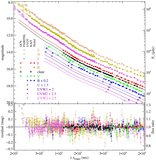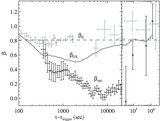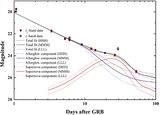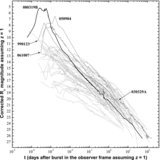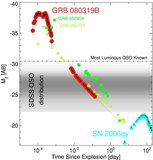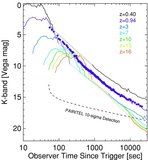Image Details
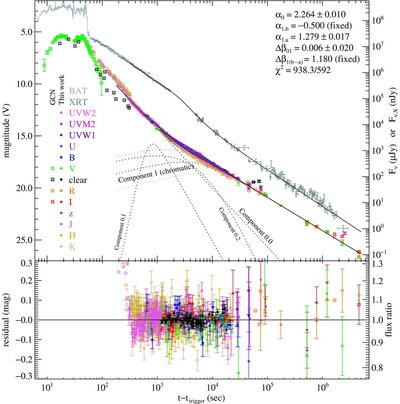
Caption: Figure 1.
Light curves of the GRB 080319B long-wavelength afterglow, fitted by our empirical model, which allows (and in this case prefers) color change. This is a combination of data from the GCN Circulars (× symbols, including the prompt light curve as plotted by Karpov et al. 2008b, in green), our observations from various ground-based instruments (KAIT, the Lick Nickel 1 m, and PAIRITEL), and our re-reductions of the Swift UVOT, XRT, and BAT data. The afterglow decays extremely rapidly, dropping from mag 5 to 21 in less than one day. For clarity, UV/O/IR data are corrected to V [Vega] mag using the model. Individual broken power-law components are shown as dotted lines; these are summed together to generate the fitted model (solid line). Different colors indicate different filters. Empty points were not used in the fitting in Section 3.4.
Copyright and Terms & Conditions
© 2009. The American Astronomical Society. All rights reserved.


